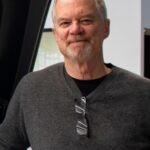While I hear a great deal from companies these days about how their latest initiative will create greater “organizational synergy,” which I actually find is nearer to “organizational antagonism” where the performance of the whole does not equal anything near the sum of talent of its individuals. Well-intentioned leaders add new initiatives in the hope of tapping into unused human potential but then find themselves facing greater entropy because of the increased chaos the initiative creates in the system.
This was certainly the case when Alan Mulally arrived at Ford in 2006. At the time, there was no shortage of sophisticated initiatives designed to improve organizational performance. Nor was there a shortage of incredibly talented and hardworking people to carry out those initiatives. But those things together were somehow not enough to keep Ford from steadily losing market share, boatloads of cash, market cap and experiencing a chaotic downward spiral.
So what was the problem?
In part, it was a lack of organizational focus. Every functional organization, every geographical organization, and even every program team seemed to have its own unique plan to fix the company.
What’s more, we also lacked a comprehensive methodology for leveraging the capability of the entire organization to effectively move the company in the same direction. We lacked a focused operating system.
From his first day, Alan worked with his senior executive team to develop “One Ford” – the product-led revitalization plan that would align the entire enterprise. He initiated global functional organizations to better leverage capability around the world, he divested brands to increase leadership focus, and he worked to enroll each and every employee in the plan through effective strategy deployment and tireless communication. He consistently urged the team to take a “laser focus” on creating products our customers would truly value.
But he did much more than talk. He also created a powerful operating system that breathed life into the One Ford plan, leveraged the talent, changed the culture and moved the enterprise forward together.
It was the operating system he created that animated the strategy and brought the company together to deliver.
Further, the system is a single, integrated system made up of interdependent parts. It is not a hodgepodge of departmental plans that do not hang together, or a string of episodic management interventions. An effective operating system is purposeful, transparent, multileveled and cascades throughout the organization, establishing clear, aligned roles and responsibilities in order to deliver the plan. It knits together, and drives, critical organizational value creating activities such as strategy deployment and continuous improvement, new product delivery, people development and working environment, manufacturing and supply chain. Finally the operating system provides its own performance feedback on how you are doing.
At the heart of Alan’s operating system was his Business Plan Review (BPR).
Every Thursday Alan brought together all functional and regional leaders to review the business environment, progress on the plan and status of key objectives. Only new issues and changes from the previous week were reviewed. Alan worked hard to get issues out in the open by telling execs “We can’t manage a secret” and making it safe by assuring them that “You have a problem, you are not a problem” and setting the tone by saying, “The neatest thing about this process is that we are going to get back together next week and I know you will make progress by then.”
He also utilized Special Attention Reviews (SAR) for deep dives on particular issues. One example of this was during the Great Recession when a number of our suppliers (and two of our North American competitors) declared bankruptcy. We used SARs to align and coordinate activities across the enterprise in a rapidly shifting environment. For a fuller treatment of BPRs and SARs see Bryce Hoffman’s excellent book “American Icon.”
But to stop at Alan’s BPR level is to miss the point. The system was not limited to a small circle of the most senior executives – it permeated the entire enterprise. While my boss, John Fleming, EVP, attended Alan’s BPR, my colleagues and I attended his. In turn, my chiefs attended my version and their managers attended theirs throughout the company and around the world. We had the same plan, focused on aligned priorities and utilized the same format. If I had to attend Alan’s BPR to talk about an issue, I did not prepare new slide decks. I utilized the same thing we all used every week – just my level of detail was different. Tightly coupled with other key mechanisms such as design reviews, development milestone reviews and Matched Pair meetings, we created a powerful and cadenced operating system that brought us together and moved us forward as a global team.
I believe that this system was one of the most important elements of Ford’s historic, product-led turnaround.
It clarified our priorities and focused initiatives, leveraging their interdependencies toward a common set of goals, (in our case, around creating products our customers would value). And most importantly it enrolled everyone in the effort.
An effective operating system brings strategy to life. It synchronizes critical activities, enables the organization to respond quickly to a changing environment and allows plans and teams to move together. What’s breathing life into your strategy, or is it just a collection of lifeless documents hanging from a wall?




